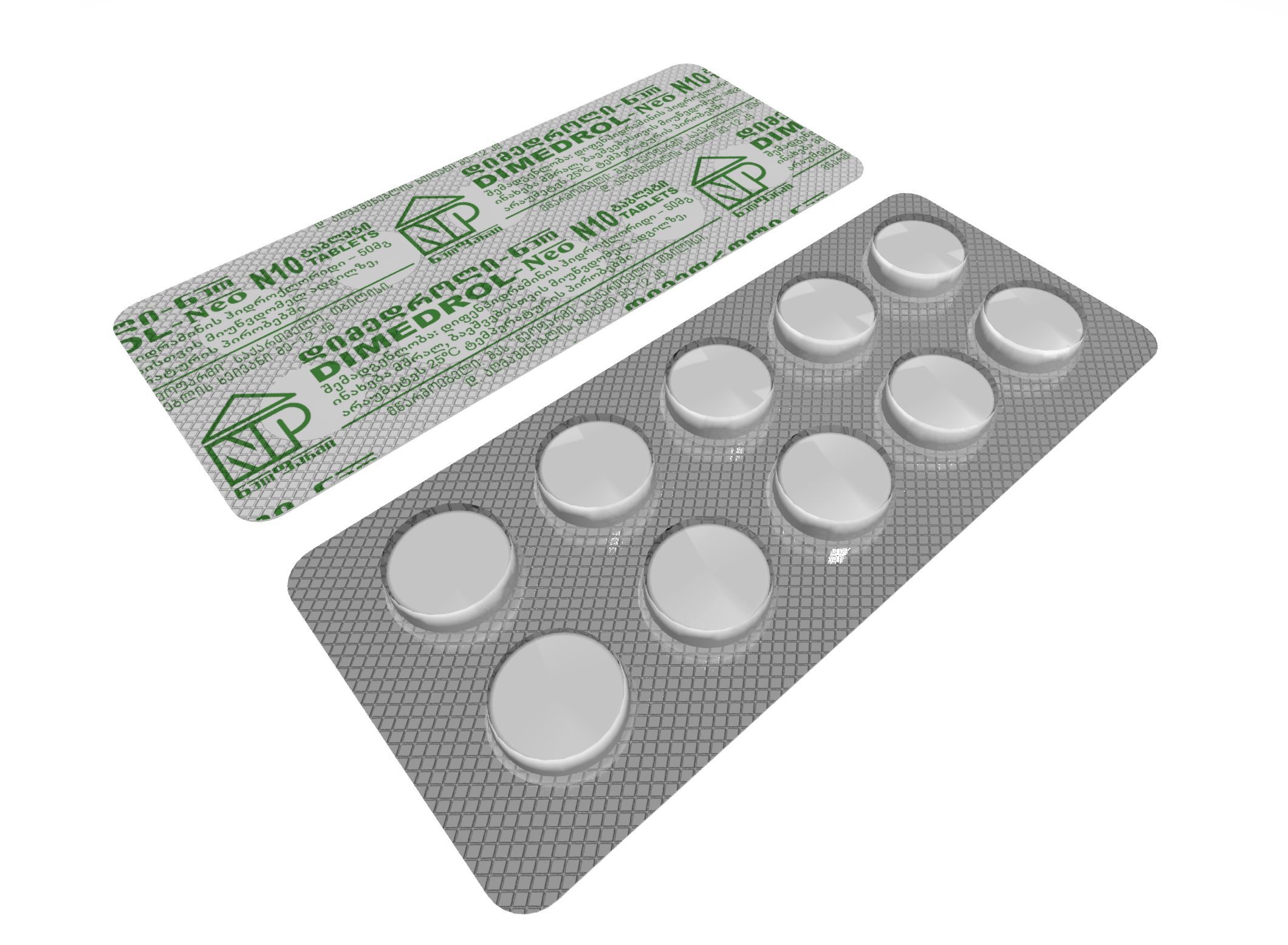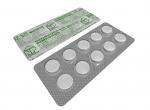Dimedrol neo #10mg Tab
 H1- histamine- receptors blocker
H1- histamine- receptors blocker
Drug form: Tablets.
Pharmacological group: H1- histamine- receptors blocker.
Description: White, flat - cylindrical shape tablets.Composition:
Active substance: Diphenhydramine hydrochloride– 50 mg.
Aiding substances: Lactose, starch, calcium or magnesium stearate, polyvinylpyrrolidone, talcum.
Pharmacological operation:
Diphenhydramine hydrochloride is the first generation H1 - histamine- receptors antagonist. It gets into hematoencephalic barrier and impacts on brain H1 - receptors, suppresses operation of the central nervous system, reveals cholinergic activity, characterizes sedative, antiallergenic, local anesthetic, spasmolytic and moderate ganglionic blocker action.
Pharmacokinetics:
Diphenhydramine hydrochloride is quickly absorbed from the gastrointestinal tract; maximal contestation in blood is reached in 20-40 minutes. 98-99% relates to plasma proteins. Reaches in hematoencephalic barrier. Mostly metabolizes in the liver, partly - in lungs and kidneys. Semiejection period makes up 44-10 hours. During the day it is completely excreted by kidneys in the form of the conjugated metabolites with glucuronic acid.
Indication:
• Sleeping rhythm disorder (monotherapy or in a combination with somnifacients);
• Allergic reactions (nettle-rash, hay fever, angioneurotic edema);
• Allergic conjunctivitis;
• Vasomotor rhinitis;
• Haemorrhagic vasculitis;
• Serum sickness;
• Dermatoses;
• Chorea;
• Sea sickness;
• Ménière's syndrome;
• Premedication.
Order of intake and dosage: Is taken peroraly.
Adults: 1 tablet (50 mg) 1-3 times in twenty four hours. In the form of sleeping pill – 1 tablet (50 mg) before sleep. The greatest single dose – 1 tablet (100 mg), the greatest daily dose – 5 tablets (250 mg).
To children from 6 to 12 years: 1/3 or 1/2 tablets (15-25 mg) 1-3 times in a day.
Treatment course Duration: 10-15 days.
Side effects:
May cause: short-term loss of sensitivity of the oral cavity mucous membrane, drowsiness, general weakness, psychomotor reactions speed lowering. In children may develop sleeplessness, irritability and euphoria.
Rarely: dizziness, headache, mouth dryness, nausea, photosensitization, movement coordination disorder, tremor.
Contraindications: Prostate gland hypertrophy, glaucoma, stomach and duodenum ulcerative disease, bladder stenosis, bronchial asthma, epilepsy, hypersensitization toward diphenhydramine.
Pregnancy and lactation period: During pregnancy and lactation Diphenhydramine is used with care, only in that case when the expected therapeutic effect for mother exceeds risk for a fruit or the child.
Special instructions: During treatment alcohol intake is forbidden.
Impact on ability of management on vehicle and mechanisms:
Is used with care for those patients whose activity demands attention concentration and fast psychomotor reactions.
Overdose: At simultaneous application strengthens ethanol and central nervous system oppressing preparations action.
At simultaneous application MAO inhibitors strengthen diphenhydramine anticholinergic action.
At simultaneous intake together with psychostimulants antagonistic action is noted.
At time of poisoning treatment, reduces efficiency of apomorphine, as antiemetic agent.
Strengthens anticholinergic effects of preparations with anticholinergic activity.
Storage conditions: Store on temperature not exceeding 25˚С, in a dry place and keep away from children.
In case of visual defects the preparation can not be used!
Order of issue: Pharmaceutical product group II - is used on doctor’s prescription.
Shelf Life: 3 years
Package: 10 tablets in polyvinylchloride blister.


